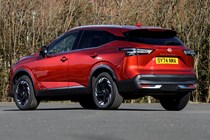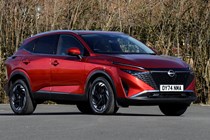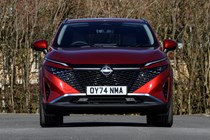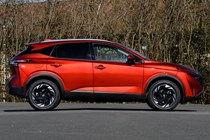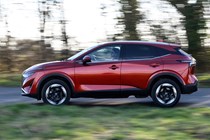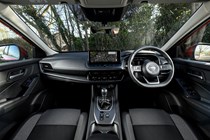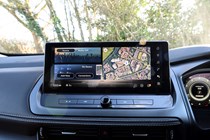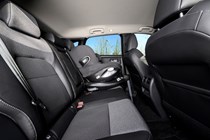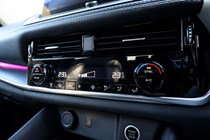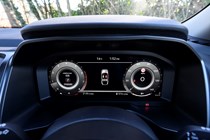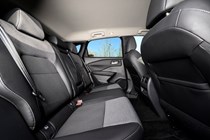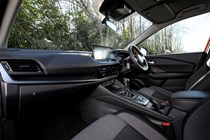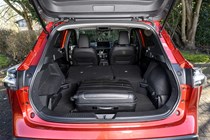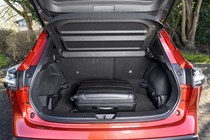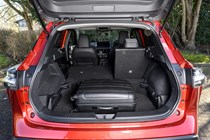
Nissan Qashqai engines, drive and performance
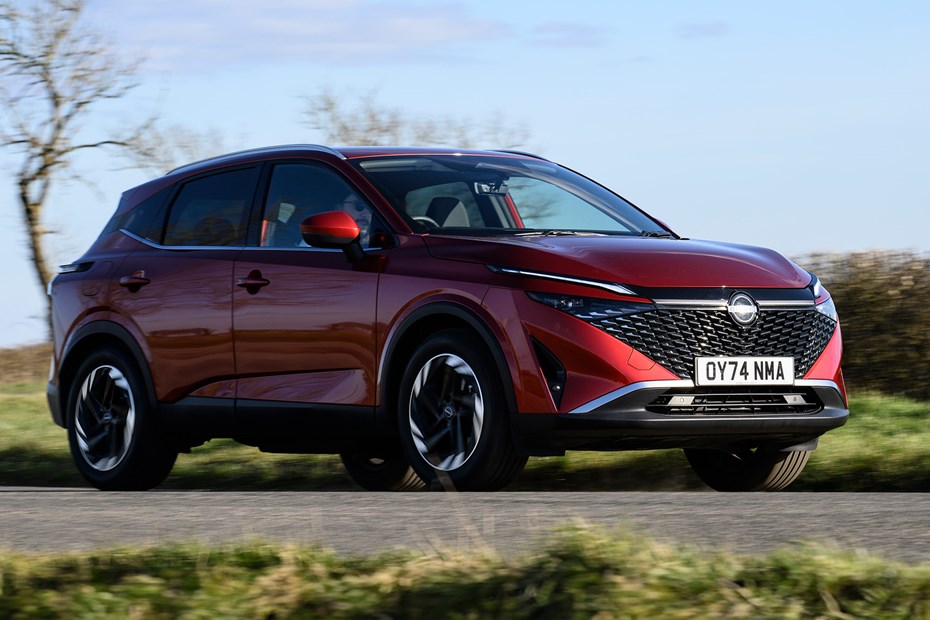
- Petrol-only line-up – no diesels
- Mild-hybrid or full hybrid power
- Four-wheel drive available
Petrol engines
The mild hybrid Nissan Qashqai’s performance is best described as adequate. There are two power outputs to choose from here – one with 140hp and one with 158hp. Neither will set your pulse racing, but the latter option has a little more grunt and so is preferable if you do a lot of motorway miles.
Still, it feels a lot less muscular than the 150hp 1.5-litre petrol engine fitted to Volkswagen Tiguan. Its turbocharger wakes up sooner and its gear ratios are better matched to the engine, which means you can take better advantage of the power available.
Speaking of which, the Qashqai’s manual gearbox isn’t very well-spaced. If you’re wringing its neck to join a motorway slip road, you’ll lose 2,500rpm with each gear shift. That’s enough to drop the engine just outside of its power band and completely halt your charge.
It also needs a lot of revs to get moving and will bog down if you’re crawling around town in second gear. For instance, if you try to pull away from walking pace in second, the engine will cough and splutter like it’s being fuelled by treacle. You can learn to drive around it, but we found it rather frustrating when we first encountered it.
You can fix this issue by opting for the automatic. It’s a CVT, which is far from our favourite transmission choice. But, as much as we hate to admit, it’s better suited to the Qashqai’s 1.3-litre mild-hybrid petrol engine. It’s more responsive than the manual, even if it does rev the engine to a million when you floor the throttle.
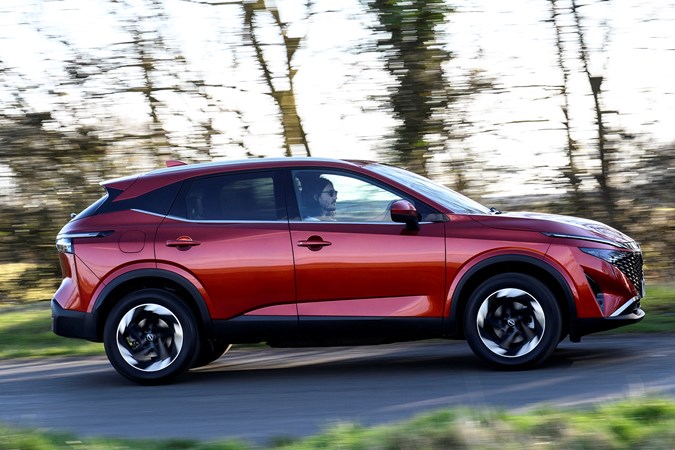
Hybrid engine
The best option in the Qashqai’s range is Nissan’s E-Power setup. It’s essentially a range-extender, but the battery powering the motor is tiny which means the engine needs to constantly generate electricity to keep the car moving. And because it’s an electric motor moving the car, there’s no conventional transmission. That means fewer moving parts, better reliability and improved efficiency. According to Nissan, at least.
Nissan says you end up with a driving experience akin to that of an electric car, with instant throttle response and silent take off from rest. This isn’t strictly the case, as it doesn’t feel significantly differently to other hybrid systems, though does offer a smoother and quieter power delivery than rivals such as the Toyota C-HR.
At higher speeds, the Qashqai E-Power is more refined than most other full hybrids. Unlike Toyota’s system, the petrol engine doesn’t need to rev harder to support the electric motor, which means there no annoying ‘mooing’ from the other side of the firewall. Performance is brisk for a car of this type, too. The E-Power system can get the Qashqai from 0–62mph in 7.9 seconds.
But the where the Qashqai E-Power really shines is around town. It can drive for around 3-4 miles on pure electric power, which means you can normally complete the last leg of your journey without burning a drop of petrol. That’s great for a car that can’t be plugged in.
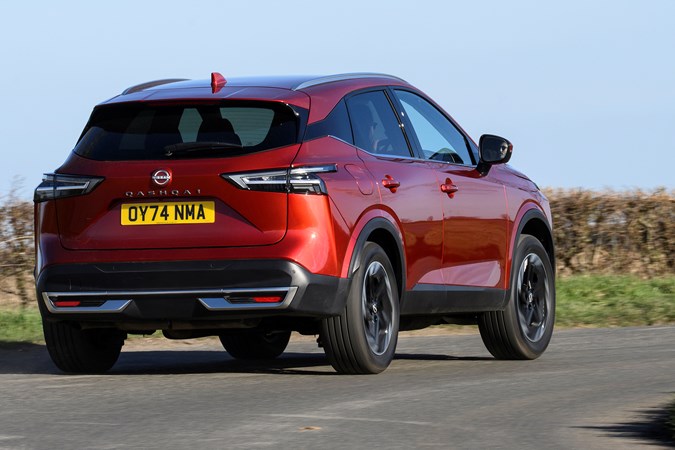
What’s it like to drive?
- Safe and predictable handling – not much fun
- Firm suspension gets jittery on imperfect roads
- Big alloy wheels produce a lot of road noise
The old Qashqai was perfectly fine to drive – and this new model continues that trend. We’ll start with the good bits, namely the steering which is sharp and surprisingly direct. It’s also quite light in an obvious attempt to make the car easy to live with around town.
The suspension is a little hit and miss. The dampers are a little too firm for our liking, as sharps bumps tend to send shudders through the cabin as they can’t compress quickly enough to absorb the impact. But the setup’s quite well tuned for larger undulations, such as long dips in faster roads.
We’re not happy with how much the Qashqai fidgets at low speeds, either. It’ll jiggle about relentlessly around town, especially if you opt for a higher specification with outrageous alloy wheels. If you want the most comfortable family SUV possible, we’d suggest looking elsewhere – the Skoda Karoq and Volvo XC40 are both far more cossetting.
Another gripe we found with the Qashqai, at least on the larger alloy wheels, is that there’s lots of road noise – and it gets more intrusive as you pile on speed. It means, with the E-Power at least, the driving experience isn’t quite as refined and relaxing as it could be.
We’ve not yet sampled the Qashqai’s four-wheel drive system, but we found the mechanically related Nissan X-Trail to be surprisingly capable off-road. Manual versions of the Qashqai can tow a 1,935kg braked trailer, while the 158hp 2WD auto can haul 1,985kg. The four-wheel drive mild hybrid can handle 2,040kg, but the E-Power can tow the most at 2,180kg. It’s worth flagging that it’s front-wheel drive only, though.



